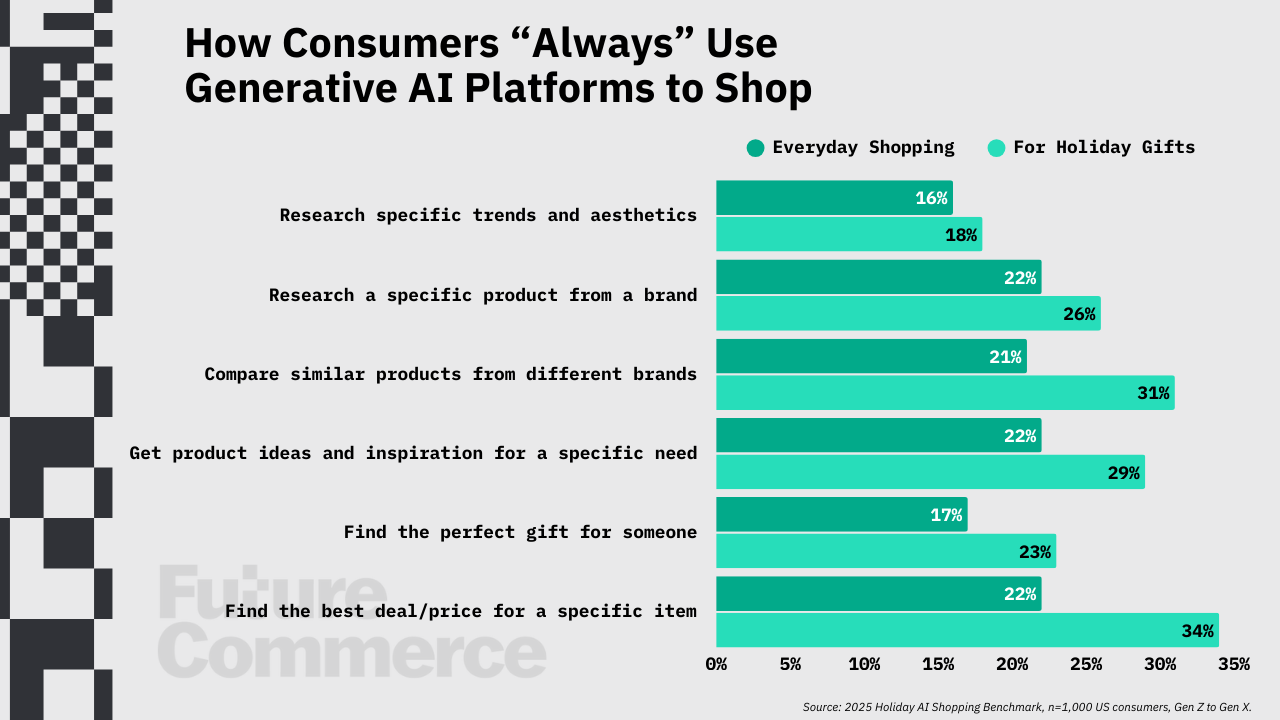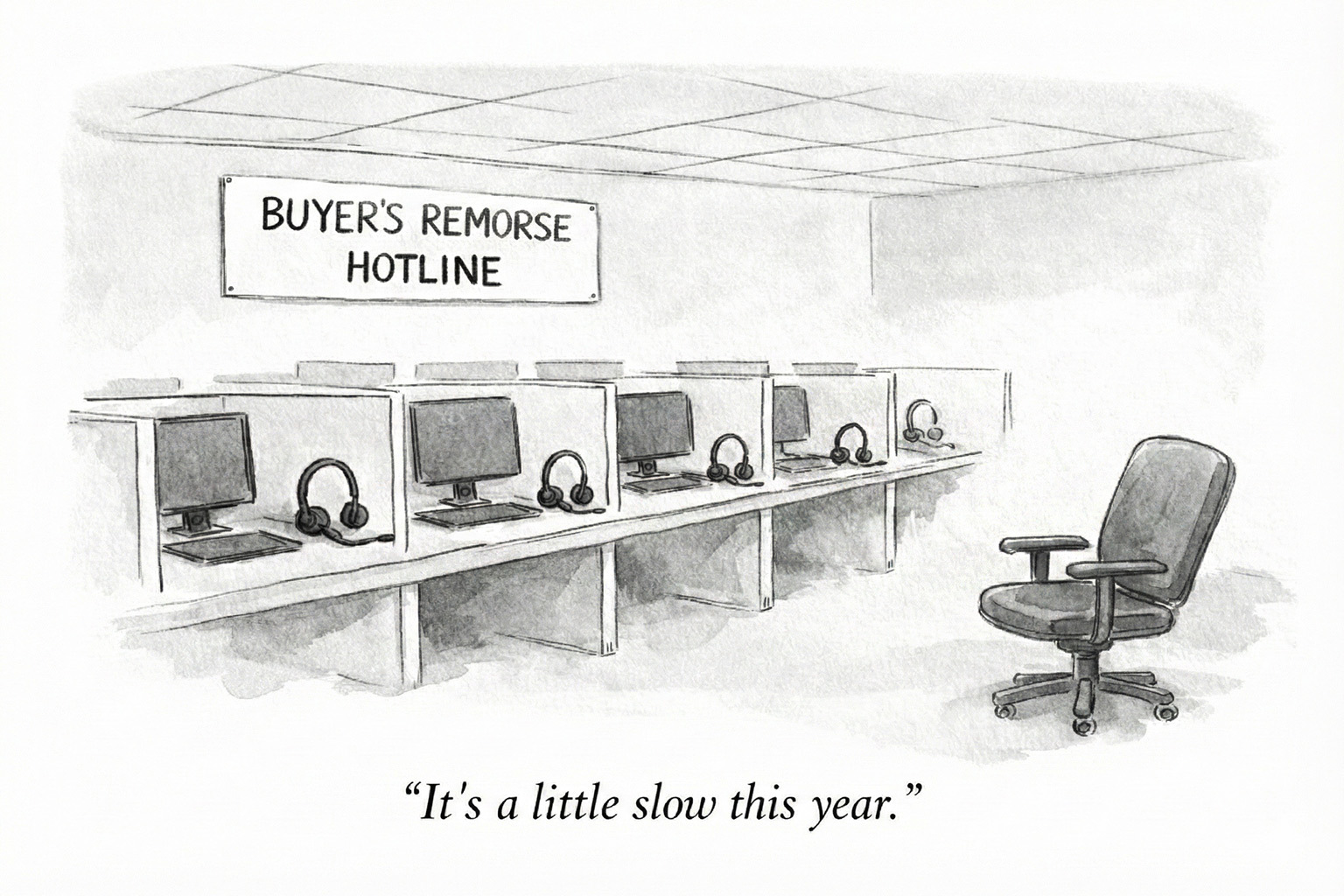
“The Assholocene”

Welcome back, futurists.
This past Wednesday, we met hundreds of commerce futurists as we launched MUSES to the world during Miami Art Week. Together with twelve artists, a decked-out retail pop-up, and, for the first time ever, our full collection of printed works; we elevated the conversation of culture and commerce on Lincoln Road in Miami Beach.
If you’re in Miami Beach for Art Basel, we’re around today until 5PM. Drop by and shop the store, and stay for panel talks featuring friends of Future Commerce.
“Whatever the man called every living creature, that was its name.” Genesis 2:19
In an age marked by dissent, the seamless adoption of names for social movements, crafted by the few, is a surprising unifier.
The Roaring Twenties. The Great Depression. The Sexual Revolution. Every era and social movement can be defined by a name. What is the name of this common era, the 2020s, where we’re experiencing an acceleration of technological and cultural shifts? Kyle Chayka, columnist and former co-founder of web3 media brand Dirt, has a few suggestions.
The “Terrible Twenties, Cold War II, the Omnishambles, and the Assholocene,” are among those listed in his year-end review for The New Yorker.
Though not the earliest to the scene, Chayka's piece distinguishes itself by pushing the boundaries of conversation about the power and participation inherent in naming movements. It challenged me to confront underlying prejudices, pondering my own prejudicial criteria for who is allowed to participate in a conversation, a scene, a movement; an industry.
The eCommerce industry has witnessed this power struggle. I recently conducted an informal poll on Twitter, asking people to find agreement on a common spelling for “eCommerce”. Even after thirty years, we’re starkly divided (the Future Commerce style guide prefers ‘eCommerce’).

When Michael Aldrich created the first “teleshopping” experience in 1979 by connecting telephony and television to computerized catalogs, he didn’t unify an industry around the name or brand of this new mode of shopping. The mass media decided what the new behaviors should be named, and it did so without a brand study from a Big3 consulting firm.
As I write this, we’re in the midst of our third annual activation during Art Basel in Miami Beach. The crypto market is nearly at a new high, and web3 communities are seemingly returning to life. Terms and phrases now enter the lexicon at a feverish pace, especially in these tight social groups. Algorithmic timelines and social media echo chambers allow these groups to mange their own naming rights; though DAOs often descend into in-fighting and gatekeeping to exert power over naming.
Democracy is insufficient when it comes to defining a name; that’s how you get your arctic exploration vehicle named Boaty McBoatface. There is something that is higher-order than consensus or majority-rule that is required when it comes to defining a name.
We reached a consensus on “email" and “eCommerce” as agreeable names because they are mimetic — we mimic a pattern and precedent of the portmanteau of “electronic” with any other real-world behavior. It’s a futureproof naming convention. And it emerged anonymously, in a decentralized way. It was permissionless.
In biblical canon, the Creator God gave his creation, man, a name. He called him Adam, and Adam, in turn, was given dominion over the Earth and the beasts, flora, and fauna. As a created being, Adam reflected his own God-given nature through a creative act of his own — giving all living things names:
Now the Lord God had formed out of the ground all the wild animals and all the birds in the sky. He brought them to the man to see what he would name them; and whatever the man called each living creature, that was its name. (Genesis 2:19)
To name something is to claim dominion over it. Being the first to name something places you on level ground with Adam, who had the Creator God as audience to his creative act.
As the days wind down in the year, we’ll see fewer reviews and more predictions and trends reports, and the naming powerstruggle will be in full-swing.
As a media company, we at Future Commerce try to identify trends and name them, too. For instance, C.A.R.L.Y. (Can't Afford Real Life Yet) was an acronym for a consumer archetype that put us on the map back in 2019.
You can look forward to our newest trends, and their corresponding names, in our 2024 Predictions Episode on the podcast. Subscribe to Future Commerce wherever podcasts are found.
— Phillip
P.S. Add to Heart is the RomCommerce hit of the holiday season! Join us on a special holiday bonus edition of the podcast with Phillip & Friends as we count down the holiday with Walmart’s new shoppable video series, Add to Heart. Shop along with us as we review each minisode on this special bonus edition of the podcast. Listen now on Apple Podcasts or Spotify.
P.P.S. Who Gets to Participate in the Multiplayer Future? Join Phillip and special guest host Deana Burke in this unique Q&A version of the Boys Club podcast, brought to the Future Commerce audience with special consideration from our friends at Boys Club. Listen now!


Heatmapping for Design. This free tool from 3M can be used to find common user reading patterns in the way your retail endcaps and websites are designed. VAS uses statistical models of real eye-tracking research from 3M to help brands make better decisions — or introduce thoughtful friction.

Multiplayer Brand at Work. Reddit user u/TheBlasian35 made an ad for Adidas using RunwayML and Midjourney. The ad creative shows the power that users now have for creating convincing and potentially infringing lookalike ads for a brand.



GenAI for eCommerce. For retailers looking to drive e-commerce growth, the promise of generative AI (GenAI) is undeniable. According to the State of AI x Commerce Report, a study Bloomreach and others did in partnership with Future Commerce, 64% of commerce leaders agree that AI can boost customer experiences and provide a distinct competitive edge.











.svg)
